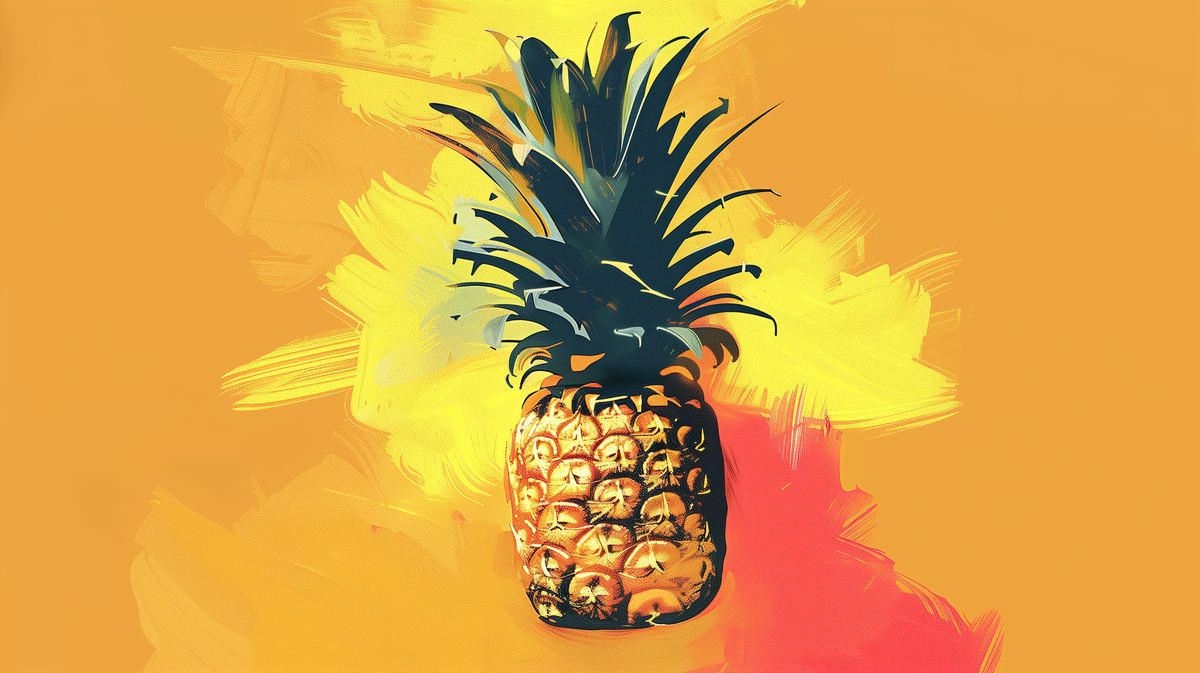The $6,374 Pineapple

Tony Morley, August 13th, 2024

"The expense was extortionate, with the cost of producing a single pineapple matching that of a new coach. Yet the glory that ensued from this taste of Paradise beneath chilly grey skies made it all worth it" — The Pineapple, King of Fruits, Francesca Beauman, 2011
Here's how free markets, globalization, and technological innovation turned a fruit worth its weight in gold, into a budget pizza topping
In 1667 John Rose, the royal gardener, took a knee at the foot of Charles II, the King of England, and presented him with a pineapple. This wasn't the $3.00 discount pineapple from your local grocer, but rather the single most expensive fruit in the Western world. Christopher Columbus was perhaps the first Westerner to encounter the pineapple in 1493 on the island of Guadeloupe, a small island amongst a grouping of islands that includes Puerto Rico, Dominica, St Lucia, and Barbados. Columbus called the fruit "piña de Indes," ‘pine of the Indians’ and with considerable difficulty, managed to bring a small quantity of unspoiled pineapple back to Europe. The pineapple was a fruit that could only grow within tropical regions and was astonishingly difficult to transport, frequently spoiling on the journey across the Atlantic. While it isn’t clear when the first pineapples arrived in England, what is clear, is that the ones that managed the journey without spoiling commanded astonishingly high prices, to the tune of thousands of pounds. At the dawn of the Industrial Revolution, the pineapple could be imported from the New World, often with high levels of spoilage losses, or grown in one of less than a handful of royal greenhouses, an option which was no less expensive than imported pineapple. The cost of domestic pineapple in England was so high as to make the fruit essentially too valuable to eat. Pineapples may well have been eaten by the King, but lesser royalty had used the pineapple as a luxury ornament, the ultimate pre-industrial flex. Guests would gather around, not to eat the pineapple, but simply to stare at its manifest symbolism of wealth, luxury, rarity, and power. A single pineapple might make the rounds of a dozen formal banquets and dinners as the centerpiece, often under a rental arrangement. Ultimately many centerpiece pineapples would spoil while on tour, having never been actually eaten by guests.
It is no exaggeration the extent to which the wealthy and elite of pre-industrial Europe were gripped with a lust for the luxury of pineapple. They commissioned, paintings of pineapples, had them carved into furniture, and mounted them in gold, atop buildings, bridges, obelisks and cathedrals, burial tombs, and much more. If you look closely enough, you can still find hidden examples of the honored place held by the pineapple, from the tops of buildings to the top of the Wimbledon trophy.

John Murray, 4th Earl of Dunmore had a 14m, 46” high stone pineapple mounted atop his country mansion, northwest of Edinburgh. The pineapple’s reign as the most fruit wouldn’t last indefinitely, as free markets worked aggressively to balance the supply and demand forces acting upon the fruit. At the height of the Industrial Revolution, the cost of pineapple began to experience a reduction. Plantations in the tropical New World, and improved transport methods, most particularly coal-powered steamships cut transport times, and thus spoilage loss dramatically. By the 1900s James Dole established extensive pineapple plantations in Hawaii. Dole’s Lana'i plantation in Hawaii produced, for a time, 75% of the world's pineapple production. Today the pineapple is a largely unregarded tropical fruit, casually thrown across inexpensive value pizzas or dried and mixed in cereal. The dramatic inflation-adjusted drop in cost from >$6,000 per pineapple to <$3.00 per pineapple, a 99.95% decrease, was driven by open markets, technological innovations in transport and energy capture, and powerful free market forces.
In the sixty years between 1961 and 2021, global pineapple exports grew from 481,000 tons to 13.3 million tons. — Our World In Data
Innovations in technology and energy, combined with the power of an entrepreneurial culture transformed not only the fate of the pineapple; but also the fate of thousands of exotic foods from across the globe. The average American, Australian, or Britain now has unparalleled access to the foods, materials, and services of globalized civilization. Today a fresh pineapple is within the reach of nearly every citizen of modern developed countries, irrespective of season. So the next time you order a Hawaiian pizza, take a moment to appreciate not only the fresh pineapple but also the astonishing human progress, globalization, and trade that made it possible.
This op-ed was inspired by a video published by The School of Life in November 2015, "Why we hate cheap things", and backed by research in "The Pineapple: King of Fruits", Francesca Beauman, 2011
The School of Life, "Why we hate cheap things", November 2nd, 2015





